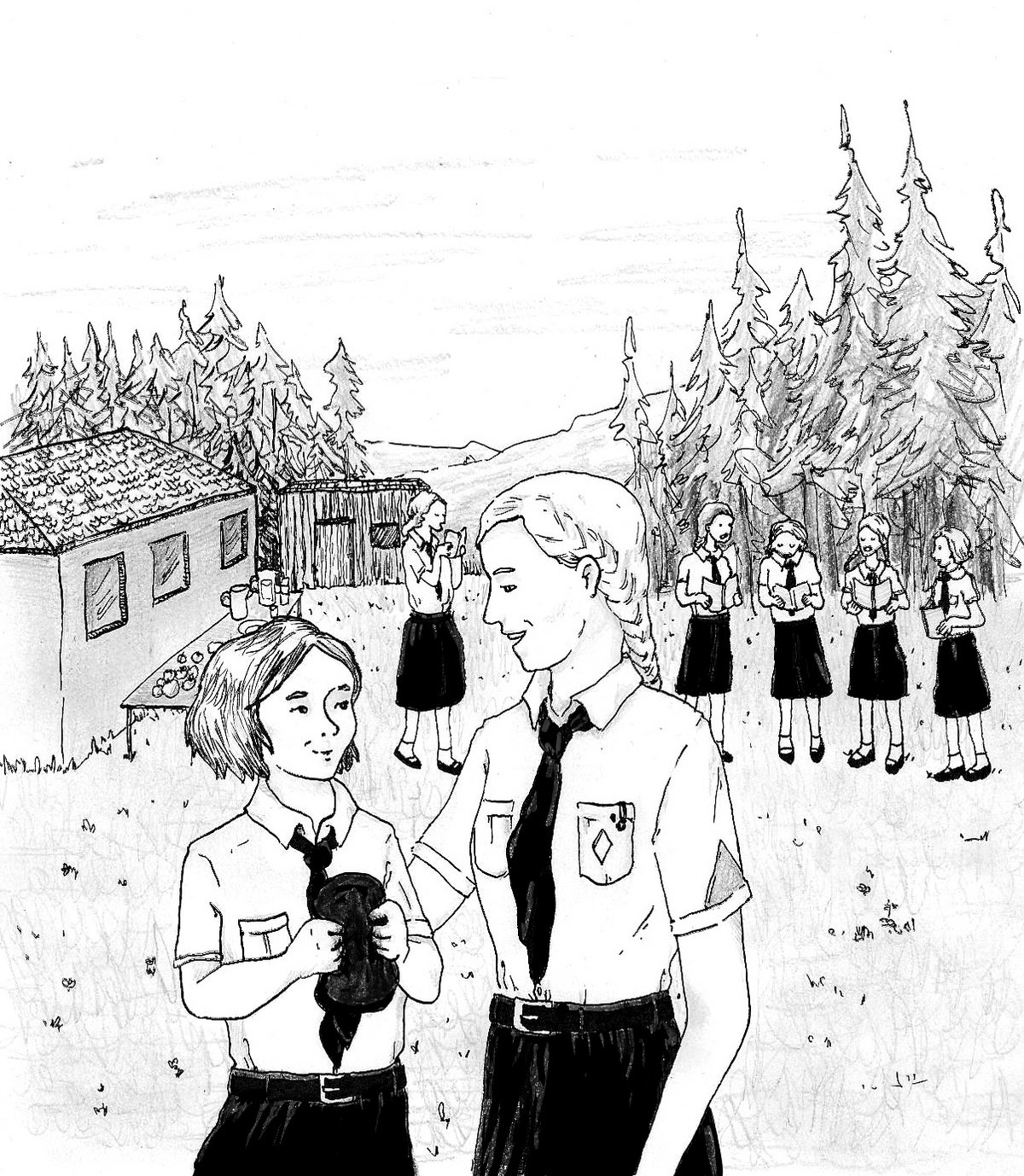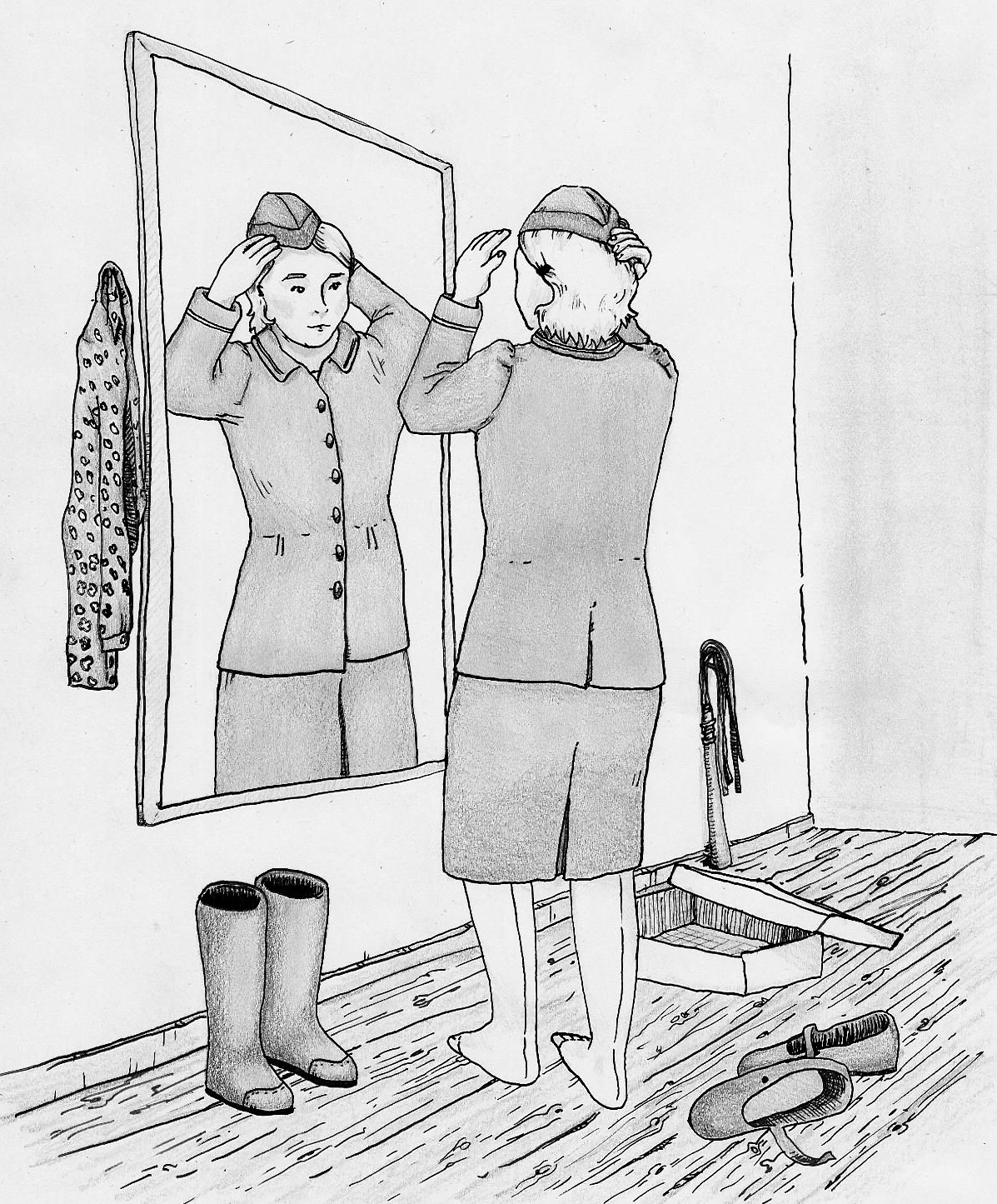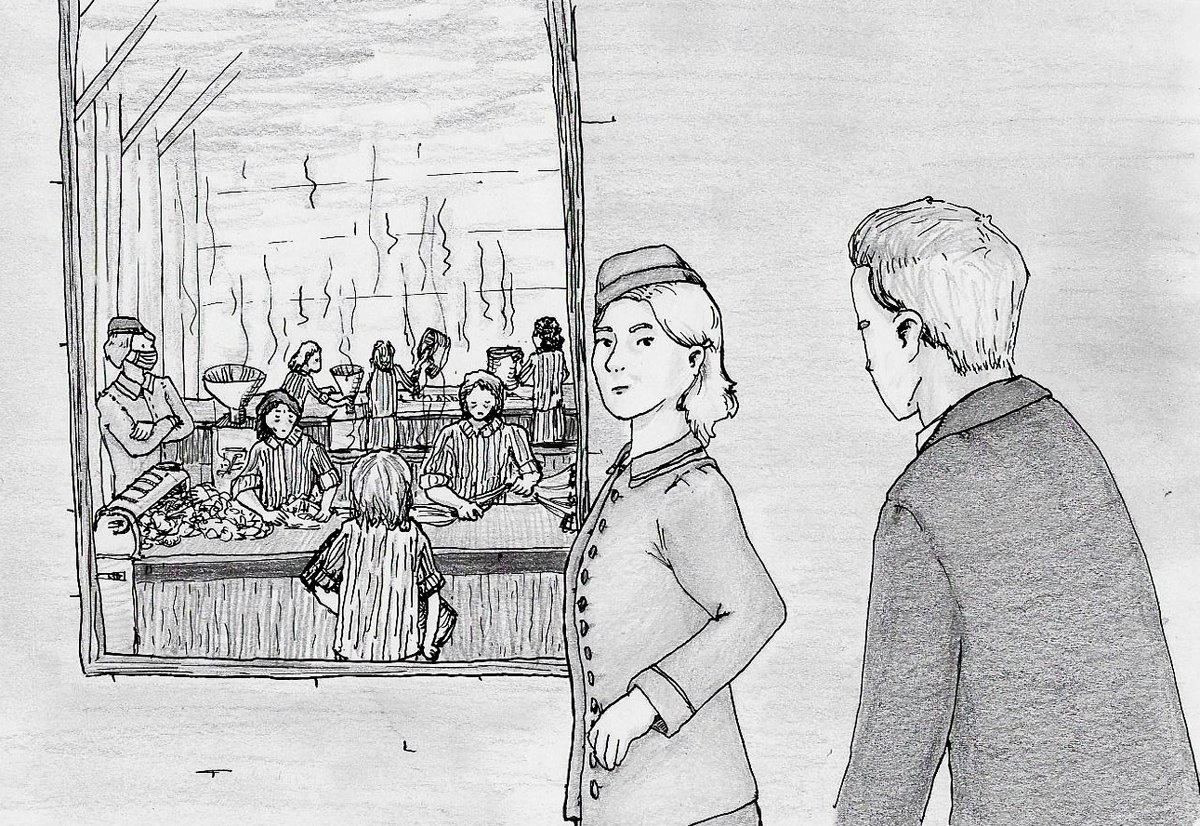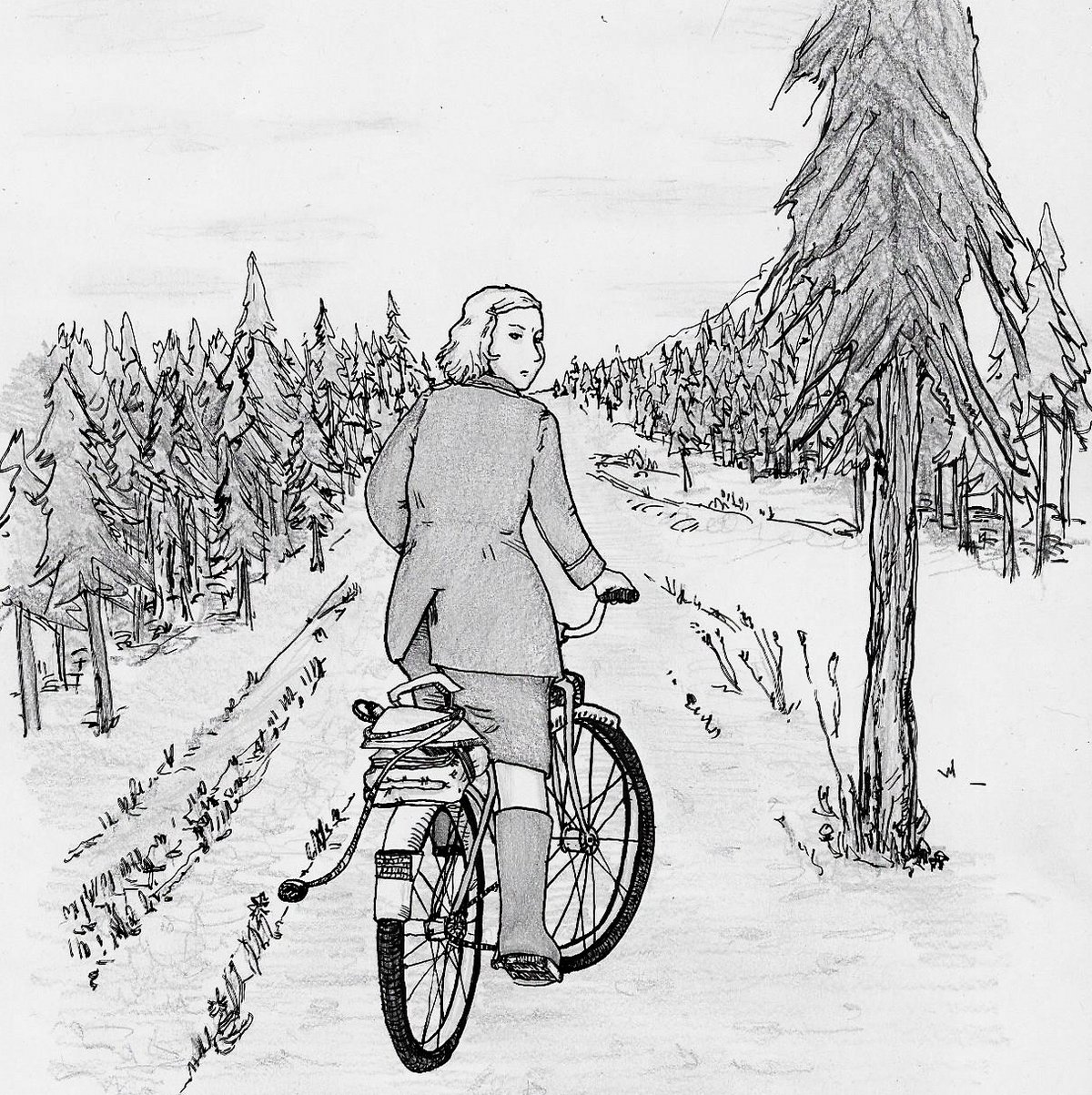In 1938, in a small town in Upper Austria, one of the many Nazi concentration camps was constructed. It was known as the Mauthausen concentration camp. It existed from 1938 to 1945. The camp was run and guarded by the SS. The people who were imprisoned here came from many countries in Europe: Poland, Russia, France, Italy, Germany, Austria and others. They were political opponents, belonged to marginalised groups (e.g. ‘criminals’, ‘asocials’) or were persecuted for anti-Semitic and racist reasons (e.g. Jews). Most of the prisoners were men, but there were also women and children.
In the Mauthausen quarry, the prisoners carried out hard forced labour. In the more than 40 subcamps (Gusen, Steyr, Linz, Ebensee, Vienna...), they were deployed in the arms industry. People lived in overcrowded accommodation. They were not given enough food and clothing, and they starved and died of diseases. SS men beat many prisoners to death, shot them or murdered them in the gas chamber at Mauthausen. In total, almost 200,000 people were imprisoned at Mauthausen and its subcamps. Half of them lost their lives.
The Mauthausen concentration camp was on a hill and could be seen for miles around. Many people were involved with the camp: they worked there, brought deliveries or knew SS men. Almost everyone knew about the death camp. Often, the SS men committed the crimes in full view of the population. On 5 May 1945, the Mauthausen concentration camp was liberated by US troops.
Here, you will read the story of a person who was connected with the Mauthausen concentration camp.
Margaretha Freinberger
Text: Philipp Harder – Illustration: Natalie Sandner

Margaretha Freinberger is born in 1919. She grows up in the small town of Grieskirchen in Upper Austria. Gretl, as she is often called, goes to primary and secondary school before training as a seamstress.
During the ‘Anschluss’ (‘Annexation’) of Austria to Nazi Germany in March 1938, Adolf Hitler and the German Wehrmacht travel through Grieskirchen on their way to Linz. Large crowds of people stand by the road cheering.
The same year, Margarethe joins the Nazi youth organisation ‘League of German Girls’ (BDM). In 1941, she is promoted to ‘girl troop leader’ at BDM. In November 1943, she becomes a member of the National Socialist German Workers Party (NSDAP).

In September 1944, now 25 years old, Margaretha Freinberger receives an order from the labour exchange in her town: the next day she is to report for duty as a warden at the Mauthausen concentration camp.
Working as a concentration camp warden is a route towards a job in the public sector and a secure income. Freinberger and two other women from Grieskirchen arrive in Mauthausen, where they meet around 25 other women and girls. Before they start work as warden, they have to complete their training. To do so, they travel by train to the women’s concentration camp Ravensbrück in northern Germany, where there’s an SS training centre for female warden.
At the centre, they swear an oath of loyalty. Although only men can become members of the SS, women can be considered ‘followers’ of the SS. Margaretha Freinberger receives her equipment: a field-grey uniform with jacket, culottes, boots and a field service cap. Many female warden are also issued whips, pistols and guard dogs. The training principally involves having the women and girls help guard the Ravensbrück concentration camp. Acts of violence against the women prisoners of the camp are part of their daily duties.
After four weeks of training, Freinberger and her two colleagues from Grieskirchen return to Upper Austria. Their new workplace is the Lenzing concentration camp, a subcamp of the Mauthausen concentration camp in the Pettighofen district, which is intended only for female prisoners. From November 1944 until the liberation of the camp in May 1945, 577 women are imprisoned here. Most are young Hungarian Jewish women who are transported by train in cattle cars from Auschwitz to Upper Austria. They are forced to produce viscose fibres for the company Zellwolle Lenzing. The work exposes the prisoners to toxic fumes. They aren’t given any protective clothing or goggles. Under guard, they have to march an arduous five-kilometre route to the factory and back every day. The women also have to do other work outside the factory: they assist in repair and construction tasks and in activities related to the camp itself.

The camp is guarded by 20 older men and around 40 women. While the men are responsible for the external guarding, the female warden are in direct contact with the prisoners. Margaretha Freinberger becomes a senior warden. She is now a member of the commandant staff and in charge of all female warden. As senior warden she decides on punishments, appoints prisoner functionaries and is in charge of the prisoners’ forced labour and of guarding operations. This puts Freinberger into close contact with the managers of the factory.
In addition to the bad working conditions, everyday life for the imprisoned women also involves hunger, cold, punishments and abuses. By the time the Lenzing concentration camp is liberated, nine women will have lost their lives there. Five of them are hit by a train and killed on their walk to work in January 1945 because the wardens were forcing a column of prisoners over the platforms despite poor visibility.

The day before the first American soldiers reach the camp in Lenzing on 5 May 1945, the female warden and male guards leave the town. Years later, the camp survivor Helene Milek will describe Margarethe Freinberger’s departure as follows: The senior warden calls all women prisoners to the rear courtyard for a last role call in order to deliver a brief speech. Then she rides off on a bicycle but returns shortly afterwards because she has left her clothes iron in the guardroom. She has someone attach the iron to the bike and then disappears, never to be seen again.
On 18 June 1945, Margaretha Freinberger is arrested in Grieskirchen by the US Army. She spends the period until 1947 in various camps where the Americans detain former Nazis, among them Dachau and Glasenbach near Salzburg. Freinberger is put on trial at Linz People’s Court, but the case is abandoned in July 1947. There are three other prosecutions of female supervisors at the Lenzing concentration camp that don’t result in court cases.
Freinberger returns to Grieskirchen and spends the rest of her life there. She marries Hans Linke and later Karl Rotter. She has a daughter. She goes back to work as a seamstress. Her customers include multiple former Nazis.
In 1989, Margaretha Freinberger dies at the age of 70.

- 1919 Margaretha Freinberger is born in Grieskirchen
- 1933 30 January, Adolf Hitler becomes Reich Chancellor in Germany
- 1938 12 March, ‘Anschluss’ (‘Annexation’) of Austria to Nazi Germany
- 8 August, construction starts on the Mauthausen concentration camp
- She joins the Nazi youth organisation ‘League of German Girls’ (BDM)
- 1939 In spring the women’s concentration camp Ravensbrück is built
- 1 September, start of the Second World War
- 1941 Freinberger is promoted to ‘girl troop leader’
- 1943 She becomes a member of the National Socialist German Workers Party (NSDAP)
- 1944 Autumn, construction of the Lenzing concentration camp (Mauthausen subcamp)
- She is assigned as a warden to the Mauthausen concentration camp
- She receives training in the Ravensbrück concentration camp
- Supervisor in the Lenzing concentration camp, appointed to senior supervisor
- 1945 Freinberger leaves the camp before it is liberated
- 4 May, the Lenzing concentration camp is liberated by the US Army
- 5 May, Mauthausen concentration camp is liberated by the US Army
- 8 May, Nazi Germany surrenders; end of the Second World War in Europe
- Freinberger is arrested by the US Army
- 1947 Trial at the Linz People’s Court. The case is abandoned
- after the Nazi era She gives birth to a daughter, and works as a seamstress
- 1989 Margaretha Freinberger dies in Grieskirchen
Further reflection in groups...
After the ‘Annexation’ of Austria to Germany, 19-year-old Margaretha joins the ‘League of German Girls’ (BDM). Why do you think she does this?
Margaretha Freinberger trains as a camp supervisor at the women’s concentration camp Ravensbrück. Imagine her on her return, telling her friends about the training and about the equipment that she and her colleagues have received for their guard duties in the concentration camp. What might she say?
Margaretha Freinberger becomes senior supervisor at the women’s concentration camp Lenzing. This is a subcamp of the Mauthausen concentration camp. The prisoners forced to work in the camp are mostly young Jewish women from Hungary. What are the working conditions like in this camp?
There are many monuments and plaques in the Mauthausen Memorial. Which of them are in memory of the women prisoners?